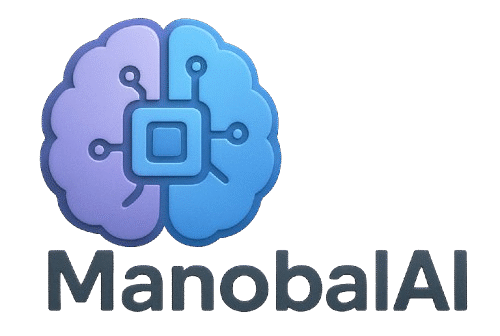Introduction
Can Veo 3 Replace Human Filmmakers? : The film industry is no stranger to disruption, but few innovations have sparked as much excitement—and anxiety—as Google DeepMind’s Veo 3. Touted as a revolutionary leap in AI-powered video generation, Veo 3 promises cinematic realism, advanced camera controls, and even synchronized audio, all from a simple text prompt12. But as the buzz grows, so do the questions: Can Veo 3 truly replace human filmmakers? And what ethical dilemmas does this technology unleash? let see And Read The Complete Article To Complete Infromation

What Makes Veo 3 Different?
Veo 3 isn’t just another text-to-video tool.
offering:
-
High-definition output (up to 4K, with 1080p as standard)
-
Advanced camera movements (dolly, drone, timelapse, etc.)
-
Multimodal input (text, sketches, images, rough video)
-
Native audio generation (dialogue, sound effects, music)
-
Genre and style control (from anime to nature documentary)123
These features, combined with the collaborative tool Flow, And It Give Complete Automation To Generate Any Type Of VIdeo Like Story telling, film making etc.
Veo 3 vs. Human Filmmakers: A Feature Comparison
| Feature | Veo 3 AI Filmmaker | Human Filmmaker |
|---|---|---|
| Visual Realism | Cinematic, photorealistic | Cinematic, authentic |
| Camera Control | Virtual, prompt-based | Physical, manual, creative |
| Audio Generation | AI-synthesized, some issues | Human voice, actors, sound |
| Narrative Complexity | Limited, can feel repetitive | Deep, nuanced, improvisational |
| Cost & Accessibility | Lower, subscription-based | High, variable |
| Creative “Happy Accidents” | Rare, formulaic | Common, serendipitous |
| Ethical Oversight | Watermarks, evolving | Established, regulated |
| Emotional Impact | Can mimic, lacks intent | Deep, intentional, personal |
The Promise: Efficiency and Democratization
-
Cost Savings: Indie creators can storyboard, prototype, and even produce ad-quality content without expensive gear or large crews4.
-
Access: Students, marketers, and small studios can compete with big-budget productions, leveling the creative playing field2.
-
Speed: Campaigns that once took weeks can now be generated in hours, with instant revisions and iterations34.
The Pitfalls: Limitations and Ethical Concerns
1. Creative Depth and Authenticity
-
Veo 3 excels at short, single-subject clips but struggles with complex, multi-character scenes, often producing stiff or repetitive results4.
-
The AI’s efficiency can lead to formulaic content, missing the “happy accidents” that define human creativity4.
2. Audio and Technical Glitches
-
Audio generation is inconsistent, with lip-syncing and dialogue dropouts common. Subtitles can be inaccurate, and some exports lose audio entirely4.
3. Misinformation and Deepfakes
-
Hyper-realistic outputs make it difficult to distinguish between real and AI-generated footage, raising concerns about misinformation, fake news, and malicious use56.
-
Google embeds SynthID watermarks, but legal and technical frameworks for detection and accountability are still evolving4.
4. Copyright and Likeness
-
The potential for unauthorized use of likenesses and copyrighted material is significant, with legal frameworks struggling to keep pace6.
5. Impact on Creative Jobs
-
As AI tools reduce the need for large crews, editors, and even actors, there’s real concern about job displacement in the creative industries6.
The Ethical Debate: Where Do We Draw the Line?
“The ability of AI to produce high-quality content may have profound implications for employment in the entertainment industry. These tools could also reduce demand for human labor in creative roles, which may adversely impact IP owners, content creators, and their representatives, as well as the entire Los Angeles economic ecosystem.”6
Transparency, consent, and regulation are now urgent priorities. The industry must address:
-
Disclosure: Ensuring audiences know when content is AI-generated6.
-
Consent: Protecting the likeness and voice of real people6.
-
Copyright: Clarifying ownership of AI-generated works6.
-
Bias: Preventing AI from replicating harmful stereotypes or misrepresentations7.
Visualizing the Shift: AI vs. Human Filmmaking
graph LR
A[Idea/Script] --> B{Veo 3 AI}
A --> C{Human Filmmaker}
B --> D[Instant Video Output]
C --> E[Pre-production]
E --> F[Shooting]
F --> G[Editing]
G --> H[Final Film]
In Veo 3’s workflow, the path from idea to finished video is drastically streamlined compared to the traditional, multi-stage human process.
The Verdict: Replacement or Reinvention?
Veo 3 is not poised to “replace” human filmmakers outright—at least not yet. Its greatest strength lies in democratizing access, accelerating previsualization, and enabling new forms of creative experimentation324. However, for deep storytelling, emotional nuance, and ethical responsibility, the human touch remains irreplaceable.
The debate is just beginning. As Veo 3 and similar tools evolve, the real challenge will be finding a balance—leveraging AI’s efficiency without sacrificing the artistry, intent, and integrity that only human filmmakers can provide.
See Veo 3 in Action
Sample Video:
Voe 3 Tutorial :
Conclusion
Veo 3 is a game-changer, but not a silver bullet. The future of filmmaking will likely be a collaboration between human vision and AI efficiency. The ethical debate is not a footnote—it’s the main event. As we stand on the edge of this new era, the industry must ask: Not just “Can Veo 3 replace human filmmakers?” but “Should it?” The answer will shape the stories we tell for generations to come.

